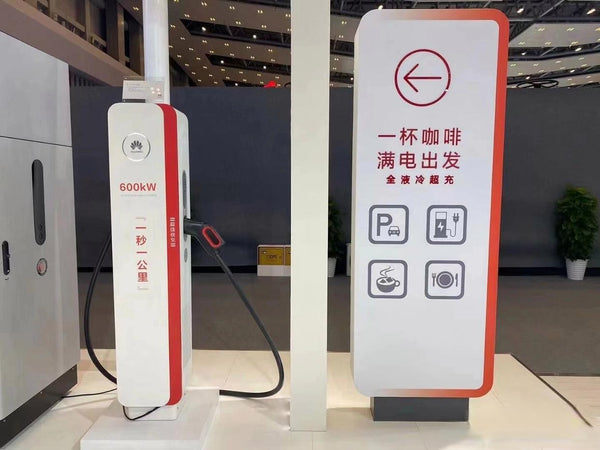Huawei "Causes a Fever" With Its Unprecedented EV Battery Charging Speed: 1-km/s

Huawei, one of the world's leading brands in the field of technology, recently announced its goal of developing super-fast charging technology for electric vehicles. Promising charging speeds of 1 km per second, opening a new era for the auto industry.
Huawei is aiming for all-electric vehicles to switch to high-voltage charging, with the ultimate goal of achieving charging speeds of 1 kilometer per second. This goal not only marks a major advance in electric vehicle charging technology but also addresses one of consumers' biggest concerns: charging time and range anxiety.
Huawei’s Ultrafast Charging Revolution
Huawei has recently unveiled an innovative liquid-cooled ultra-fast charging station featuring impressive specifications. This charging station can deliver a maximum output power of 600kW and a maximum current of 600A, showcasing Huawei's commitment to advancing charging technology.

The station is capable of achieving fast charging speeds of approximately one kilometer per second, supporting a wide range of electric vehicles from leading brands. The company plans to deploy more than 100,000 of these charging stations in more than 340 major cities and highways in China.
Through the creation of large volumes of electric vehicle fast charging station infrastructure, Huawei is positioning itself as a valuable direction for promoting the development of the electric vehicle industry. Huawei also emphasized the importance of focusing on cost per kilowatt hour instead of initial capital costs, while investing in battery safety technology and optimizing the charging process to ensure a safe charging experience complete and effective.
Huawei sees the combination of renewable energy production, energy storage, and charging infrastructure as an effective strategy for addressing grid challenges. This integration will enable two-way energy flow, not only helping charge vehicles but also selling excess energy back to the grid, promoting the development of new business models and enhancing network growth. charging grid and electric vehicles.




